2018-07-10
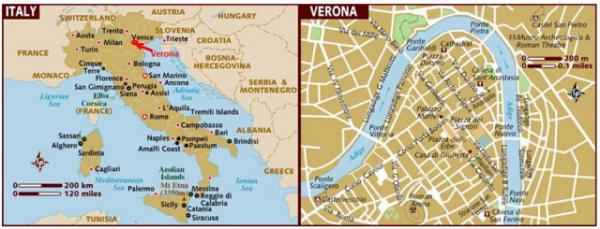
【Aiden in English】
"In fair Verona, where we lay our scene." That's one of the few lines I remember from Romeo and Juliet. And so, in honor of the "greatest literary playwright" in history, today's adventure brought us to Verona. Honestly, I don't think Verona would receive nearly as many tourists without Shakespeare's depiction of the city. What's coincidental is that the town itself had much more history than two feuding families. While there was much noise around the Renaissance, the area was quite dramatic from the early 1000s. Its involvement with local wars was frequent, from the late Middle Ages as a small settlement to the Gothic wars. Eventually, it ended up as an Italian city that Shakespeare wrote about, so now it's also on the world map. A common belief is that Shakespeare never came to Verona. Born in England, he was caught in the Renaissance wave of literature, which influenced much of his craft. While his writing occurs in Verona, Shakespeare does not explicitly describe the town or its people. Yes, Romeo and Juliet are characters that have no evidence of existing. While I found this hard to believe, writing such a story is much easier to formulate in your head than using all facts. I'm unsure whether every tourist understood that the characters might have been false since the line to view the balcony of "Juliet" said otherwise. Regardless, we went up and took a picture. It was just a tiny standing area outside a window, which I felt was overhyped. I don't know how a book motivates many people to take the time to see something allegedly true. However, two prominent, wealthy families were in the city, although perhaps not angry at each other. They also had names similar to Montague and Capulet, just in Italian. Maybe Shakespeare did have some information to draw up the story, which is why millions crowd the small courtyard under the balcony. Outside of the Shakespearian dream, we traveled through the Duomo and Basilica of Saint Anastasia one after another, filled with, you guessed it, renowned paintings and, you guessed it, marble walls (there is a lot of marble). No matter whether it's the largest cathedral (Duomo) in town or the bishop's residential house (Basilica). After the third church, I lost track of the differences. It's not dull, but it's quite the opposite. They're all too grand, and sometimes I feel so disconnected from them, especially since the local church I go to barely seems like a church in comparison. After a while, you accept them as a class on their own, each a palace filled with riches from the people to the most significant figure in their lives: Jesus. Once again, seeing what belief can drive people to do is spectacular. Constant miracles come true in building it for God, from marble walls and columns to mosaics on the floor and ceiling. I thoroughly enjoyed this small inland road tour, which marked the final day on land. From tomorrow on, I’ll enter the cruise section of this trip. In 2000, Verona City was inscribed as a UNESCO World Heritage Site. 【红霞译】 “美丽的维罗纳,我们的故事从这里开始。”
那是《罗密欧与朱丽叶》留在我记忆里寥寥几句台词中的一例,仅仅为了纪念史上“超群绝伦的剧作家”,今天值得我们亲自到维罗纳“真相”转悠一趟。
说实话,我觉得要不是莎士比亚笔下生辉,这座城市几乎没法吸引这么多观光游客,无巧不成书,维罗纳本身远比当地两个冤家渊源悠久,早在文艺复兴运动蓬勃发展之前就已经度过上千年峥嵘岁月,其间内忧外患经年不断,起始于拉丁时代晚期的小村庄又横遭哥特战争洗礼,最终被锤炼成备受莎翁青睐的意大利都会,而且荣登世界地图。
人们普遍认为莎士比亚从未来过维罗纳,其出生年代恰好赶上本土英国兰文艺复兴昌盛时期,文学作品又深受改革浪潮的影响,虽说故事情节发生在维罗纳,可是作家却鲜少明确描述当地的风土人情,没有确凿证据表明罗密欧“前往罗马的朝圣者”与朱丽叶“青春”在历史上确有其人,尽管我发现难以置信,但脑袋瓜里想象的东西要比现实生活中发生的题材更容易编成故事。我不大清楚各位游客是否明白主人公多半是虚构出来的,反正“朱丽叶”晾台前排成长龙,无论怎么着,我们登上晾台并摄影留念,阳台不过是窗外仅供人落脚的狭小空间而已,被吹得天花乱坠,结果让大家信以为真,情愿花时间欣赏子虚乌有的场景。然而,当时维罗纳似有两家富裕大户,但彼此关系未必闹得很僵,意大利名字与蒙太古“尖山”及凯普莱特“年轻领袖”相似,也许莎士比亚手头确实掌握了一些资料,这样才好煽情并把成千上万的戏迷忽悠到阳台下令人窒息的庭院里。
走出莎士比亚梦境,我们先后游览了维罗纳大教堂和圣亚纳大西亚“复活”主教堂,不出所料,除了闻名于世的油画而外,顶天立地的大理石格外醒目,无论城里规模居首的大教堂还是主教居住的圣殿,一概如此。等参观完第三座教堂,我已经分不清彼此之间有何区别,并非由于它们大同小异,相反却因其雄伟气势,有时难免让我萌生敬畏的感觉。稍候片刻,你下意识就把它们归为另类,每所殿堂荟萃了人文精华与至高无上的福祉神灵:耶稣,再次展示信仰给人以无穷力量,从大理石墙与石柱到马赛克“镶嵌”地板与天花板,为荣耀上帝就会不断涌现各种奇迹。 至于自身体会,我非常喜欢小别海岸之行,这也是内陆旅游最后一天,从明天开始,我将乘游轮远航。 2000年,维罗纳市被联合国教科文组织纳入《世界遗产名录》。 Today in History(历史上的今天):
2017: Esztergom, the Hungarian Rome HUN(匈牙利艾斯特根·古罗马之城)
2017: Lower Danube, Slovakia-Hungary(斯洛伐克—匈牙利多瑙河下游)
2017: Bratislava, Beauty on the Danube(斯洛伐克兄弟荣耀·多瑙河奇葩) 2017: Bratislava, Little Big Capital SK(斯洛伐克兄弟荣耀·迷你之都) 2017: Bratislava, Tatra Tiger SVK(斯洛伐克首都兄弟荣耀·老虎之城) 2016: Dublin, the Pale of Ireland(爱尔兰都柏林·苍茫大地) 2016: Dublin, UNESCO City of Literature(爱尔兰都柏林·文学城)
2016: Avoca, IRL's Oldest Weaving Mill(爱尔兰阿沃卡·最老的纺织作坊) 2016: Glendalough Monastery, Ireland(爱尔兰格兰达洛·两湖谷修道院) 2016: County Wicklow, the Garden of Ireland(爱尔兰威克洛·花园之郡) 2014: Bug Show @ Soccer YMCA Camp(昆虫到访基督教青年会夏令营) 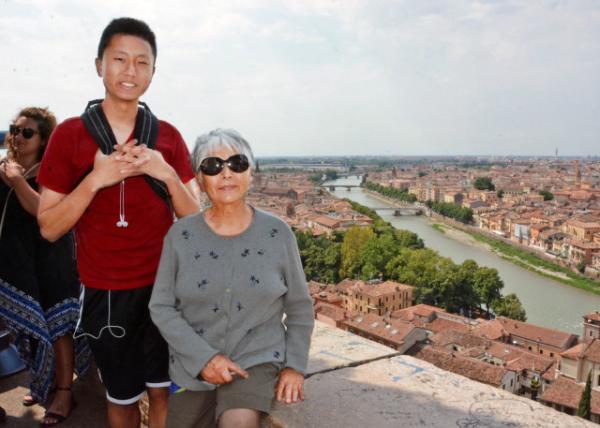 Adige River, the 2nd Longest River in Italy Adige River, the 2nd Longest River in Italy
(阿迪杰“河流”·意大利第二长河 07-10-2018) 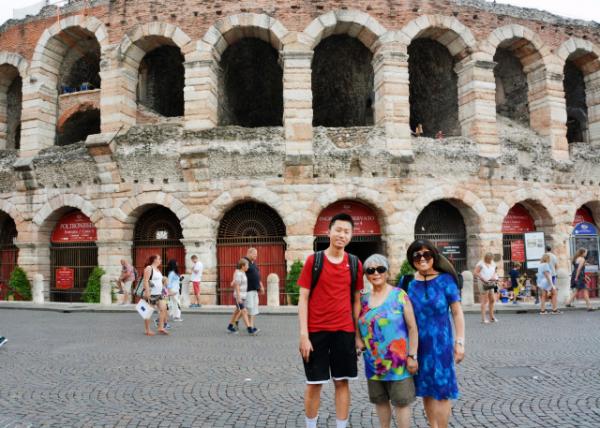 Arena di Verona, the Roman Amphitheater, Built in the 1st Century AD for the Fights of Gladiators Arena di Verona, the Roman Amphitheater, Built in the 1st Century AD for the Fights of Gladiators
(维罗纳竞技场··罗马圆形剧场建于公元1世纪,用于角斗士的战斗 07-10-2018) 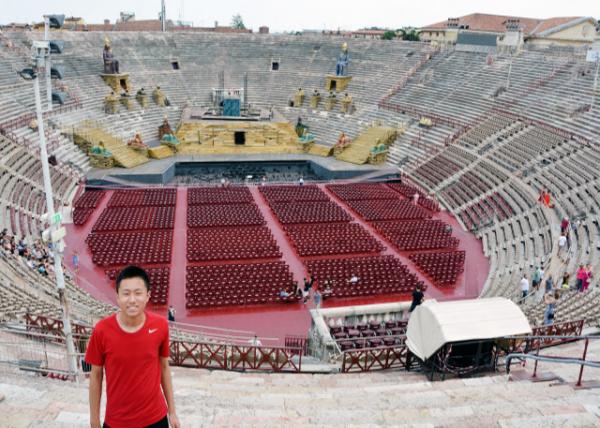 Arena di Verona, the 3rd Roman Amphitheater in Size among Those Still Existing & Used in Summer for Opera, Concerts & Events Arena di Verona, the 3rd Roman Amphitheater in Size among Those Still Existing & Used in Summer for Opera, Concerts & Events
(维罗纳竞技场·现存规模第三大夏季用于歌剧、音乐会和活动的罗马圆形剧场 07-10-2018) 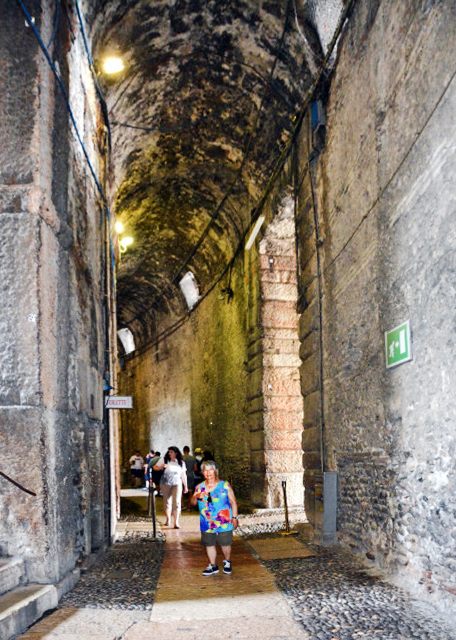
Pathway, Arena di Verona (维罗纳竞技场·通道 07-10-2018) 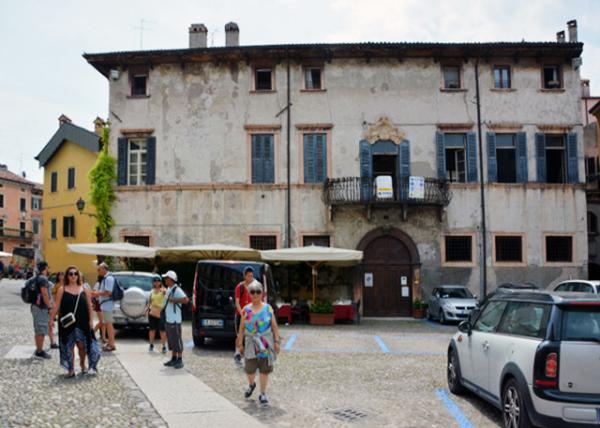 Palazzo Cerù for Aristocratic Residents Palazzo Cerù for Aristocratic Residents
(赛鲁“卷发”宫·贵族居民住宅 07-10-2018) 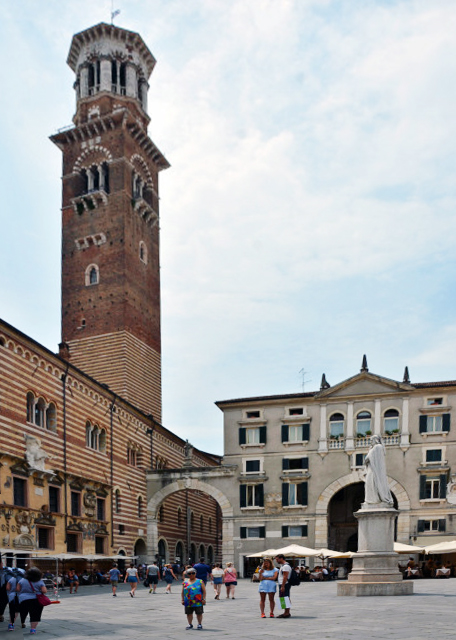
Palazzo della Ragione & Palazzo Domus Nova (象征城市力量的拉焦内“市政”宫与法官的多莫斯诺瓦“新居”宫 07-10-2018) 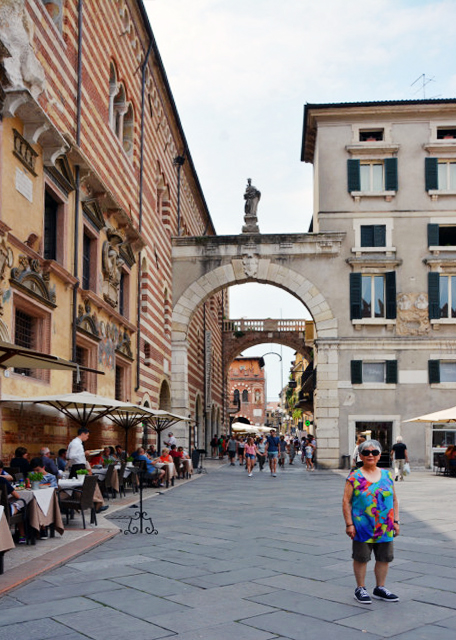
Piazza dei Signori, the Center of Political Life Since the Middle Ages (领主广场·中世纪以来政治生活的中心 07-10-2018) 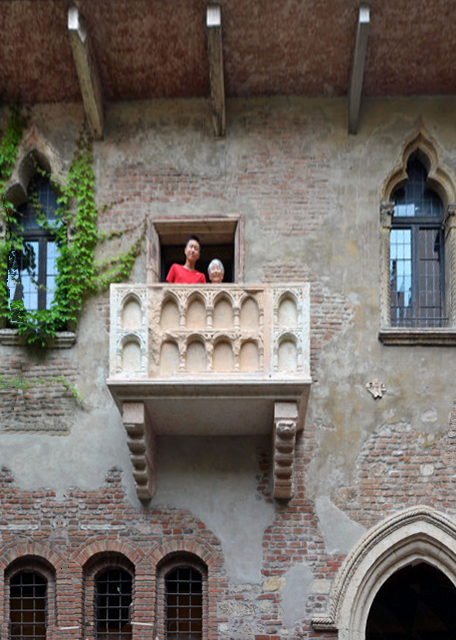
Balcony of Casa di Giulietta (朱丽叶故居·阳台 07-10-2018) 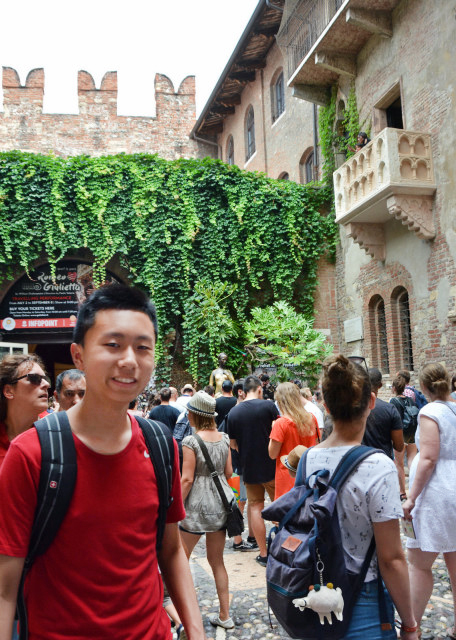
Courtyard of Casa di Giulietta (朱丽叶故居·庭院 07-10-2018) 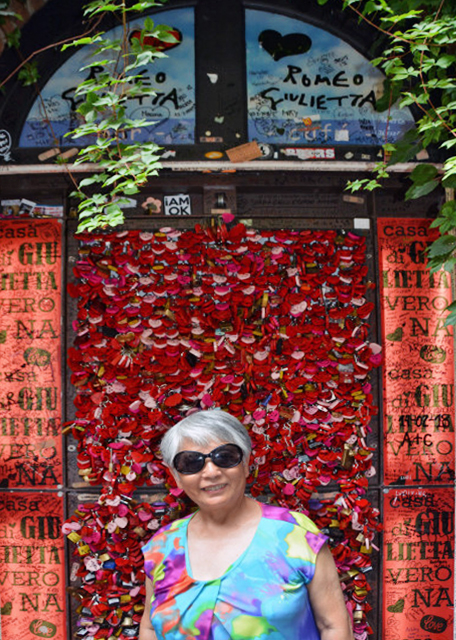
Love Padlocks @ Casa di Giulietta (朱丽叶故居·爱情锁 07-10-2018) 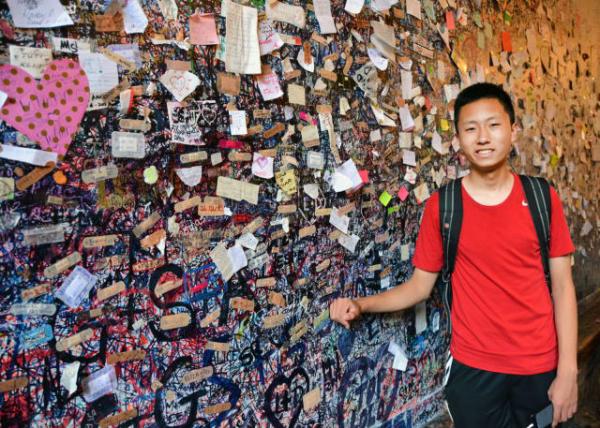 Love Letters Wall @ Casa di Giulietta Love Letters Wall @ Casa di Giulietta
(朱丽叶故居·情书墙 07-10-2018) 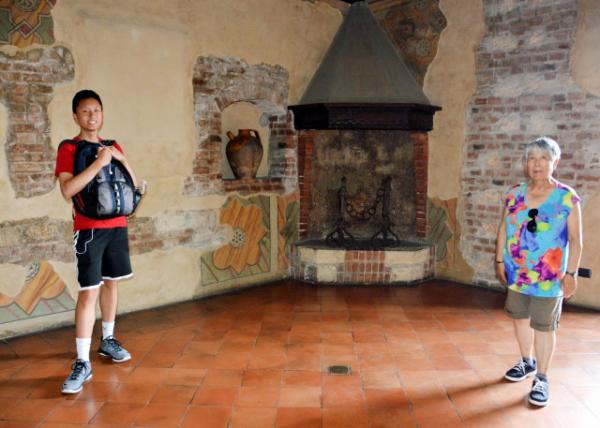 Family Rm of Casa di Giulietta Family Rm of Casa di Giulietta
(朱丽叶故居·家庭室 07-10-2018) 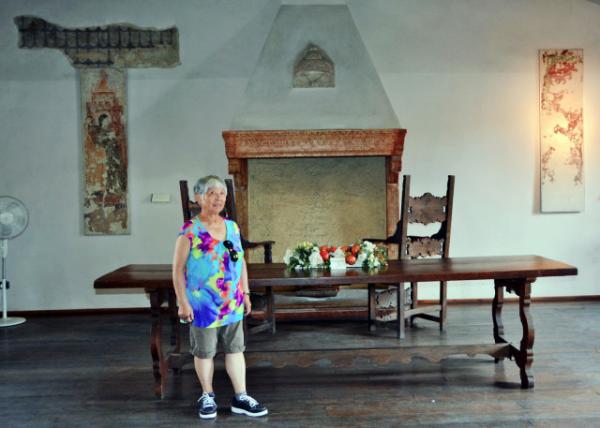 Living Rm of Casa di Giulietta Living Rm of Casa di Giulietta
(朱丽叶故居·客厅 07-10-2018) 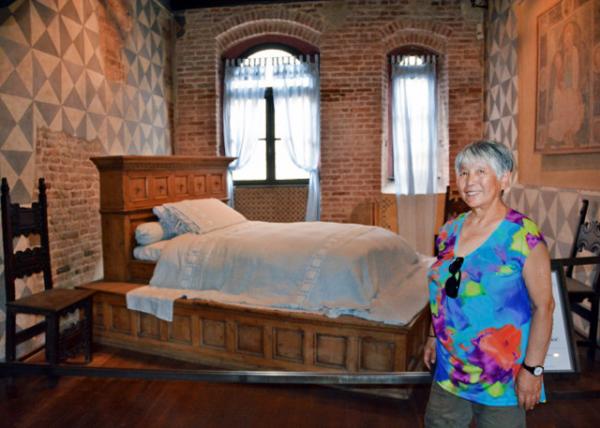 Bed Rm of Casa di Giulietta (朱丽叶故居·卧室 07-10-2018) Bed Rm of Casa di Giulietta (朱丽叶故居·卧室 07-10-2018)
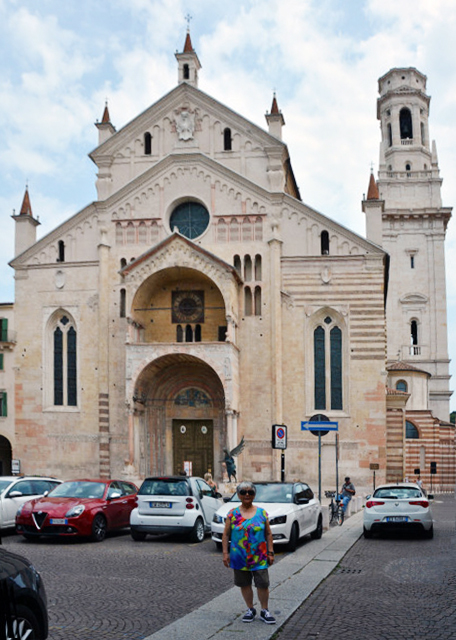
Duomo di Verona in Romanesque Style, Built in the 12th Century (维罗纳大教堂·罗马式风格,建于12世纪 07-10-2018) 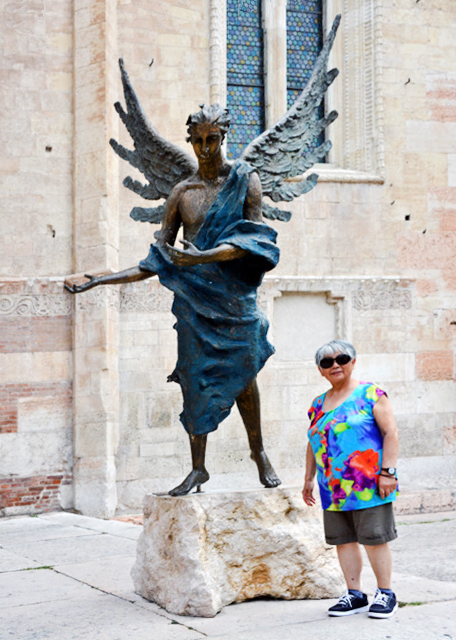
Bronze Statue of the Blue Angel of Acceptance, or Hospitality, Symbolising the Connection Between the Past & the Present @ Duomo di Verona (维罗纳大教堂·青铜雕像《好客的蓝天使》,象征着继往开来 07-10-2018) 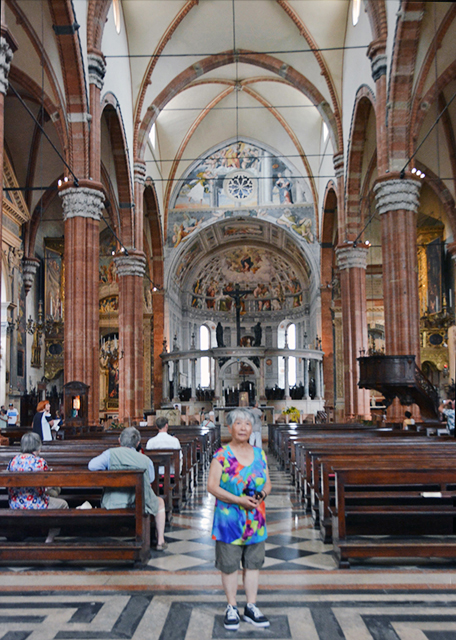
Central Nave, Duomo di Verona (维罗纳大教堂·中殿 07-10-2018) 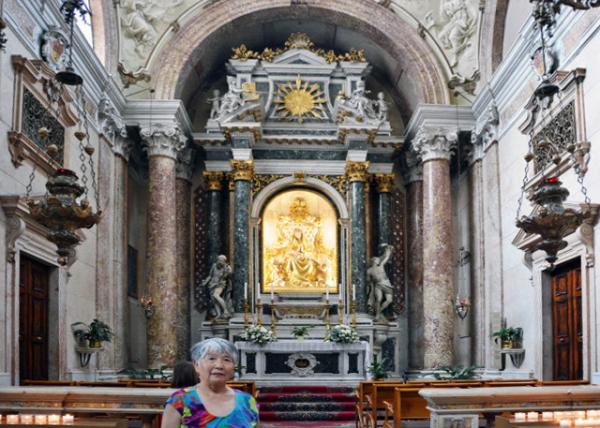 Madonna del Popolo by Vincenzo Cadorin Duomo di Verona Madonna del Popolo by Vincenzo Cadorin Duomo di Verona
(维罗纳大教堂——文森佐·卡多林“征服·挖掘”的雕像《人民圣母》 07-10-2018) 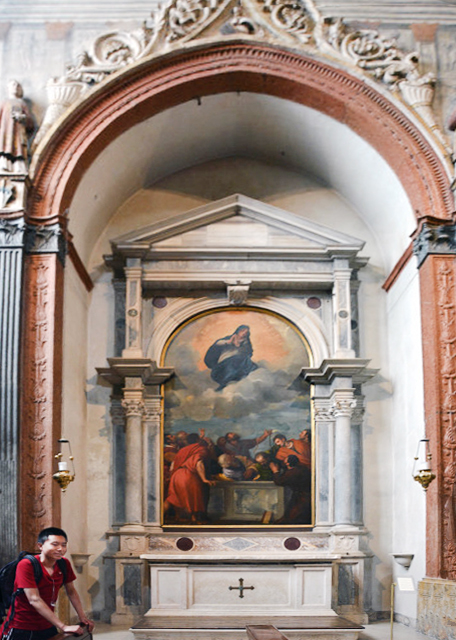
The Assumption of the Virgin Mary by Titian, Cartolari-Nichesola Chapel, Duomo di Verona (维罗纳大教堂卡托拉里—尼古拉“手推车—赢得人心”礼拜堂──提香《圣母升天》07-10-2018) 
Sarcophagus and Effigy, Tomb of Cangrande Santa Maria Antica (古圣母教堂──坎格兰德“獒犬”之墓·石棺和圣像 07-10-2018) 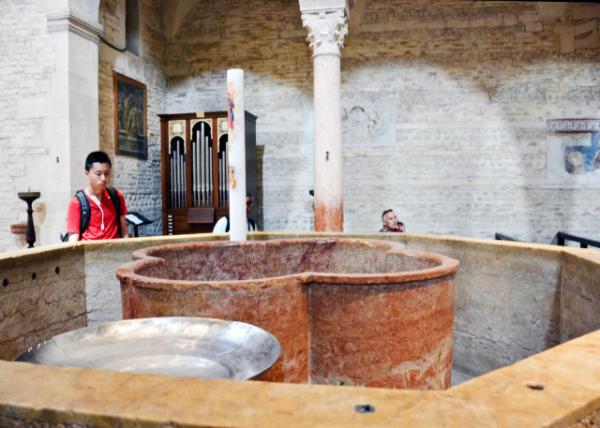 Baptismal Font, Sant'Elena Baptismal Font, Sant'Elena
(圣埃琳娜“光芒”礼拜堂·洗礼池 07-10-2018) 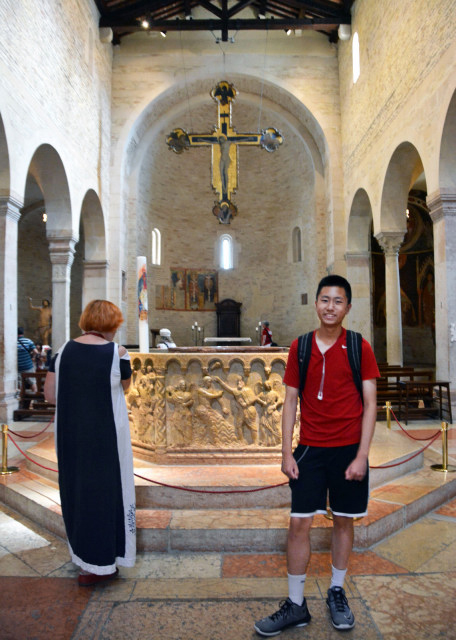
Baptistery of St John w/ Wooden Trussed Ceiling over Baptismal Font @ Sant'Elena (圣埃琳娜礼拜堂圣约翰“神慈”洗礼堂·洗礼池上方木制桁架天花板 07-10-2018) 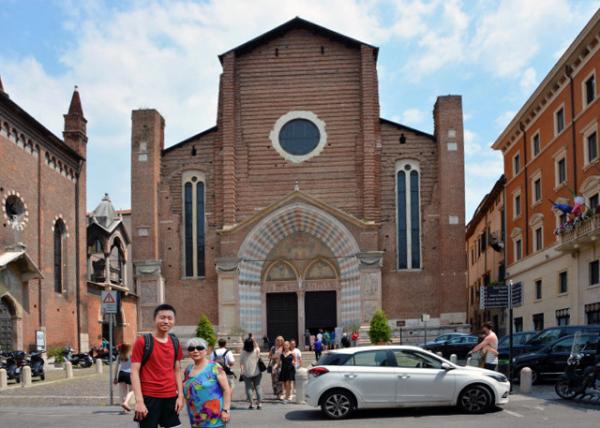 Façade of Sant'Anastasia in the 13th-Century Gothic Architecture Façade of Sant'Anastasia in the 13th-Century Gothic Architecture
(圣阿纳斯塔西亚“复活”教堂外观·13世纪哥特式建筑 07-10-2018) 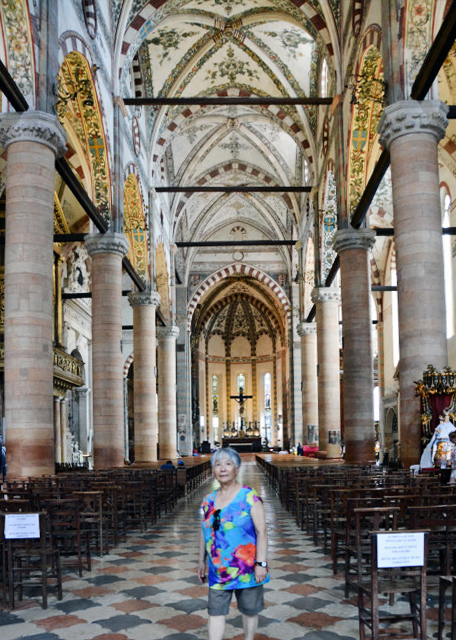
Nave w/ the Gothic-Romanesque Ceiling @ Sant'Anastasia (圣阿纳斯塔西亚教堂·哥特式与罗马式天花板的中殿 07-10-2018) 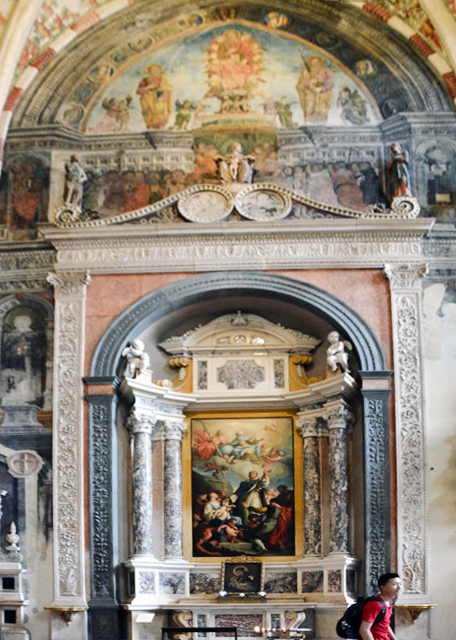
St. Vincenzo Ferrer Altar, Sant'Anastasia (圣阿纳斯塔西亚教堂·修士圣坛 07-10-2018) 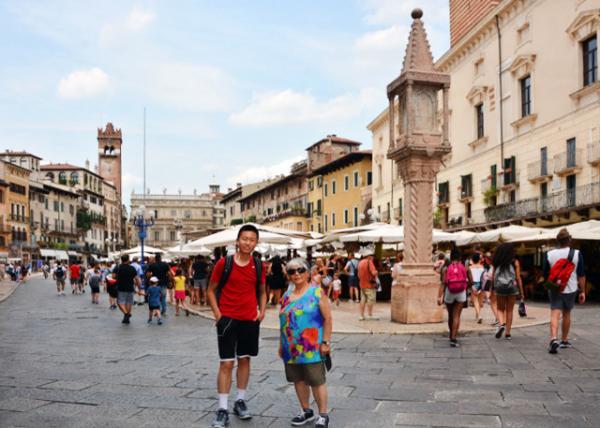 Piazza Erbe, the Central Role in Veronese Life, Offering a Blend of Ancient History & Bustling Commerce Piazza Erbe, the Central Role in Veronese Life, Offering a Blend of Ancient History & Bustling Commerce
(百草广场·维罗纳人生活中的核心,融合了古老的历史和繁华的商业 07-10-2018) 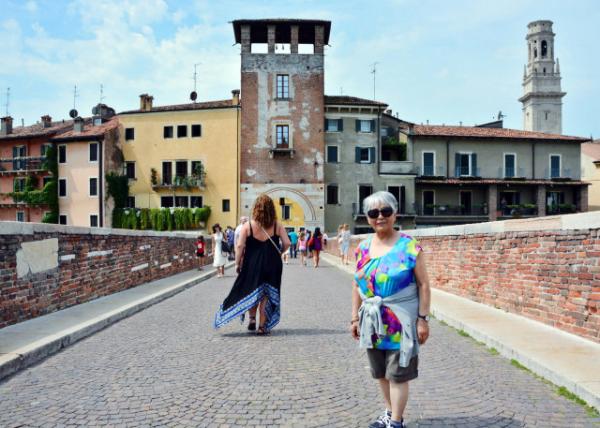 Ponte Pietra, the Oldest Roman Arch Bridge in the Medieval City Ponte Pietra, the Oldest Roman Arch Bridge in the Medieval City
(皮埃特拉“石”桥·中世纪古城最老的罗马拱桥 07-10-2018) 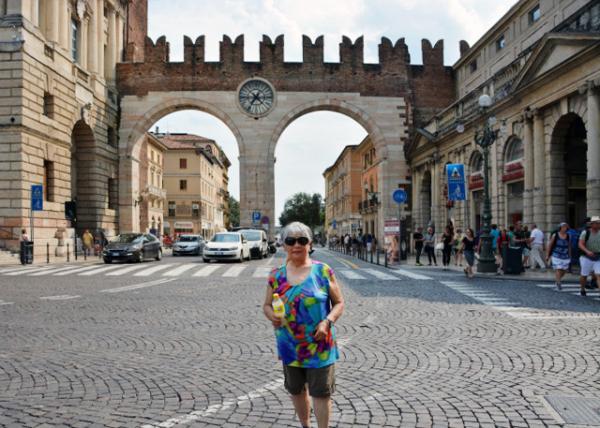 Porta della Bra, a Gateway to the City's Historic Center Porta della Bra, a Gateway to the City's Historic Center
(布拉“宽阔”门·通往本城历史中心的门户 07-10-2018) 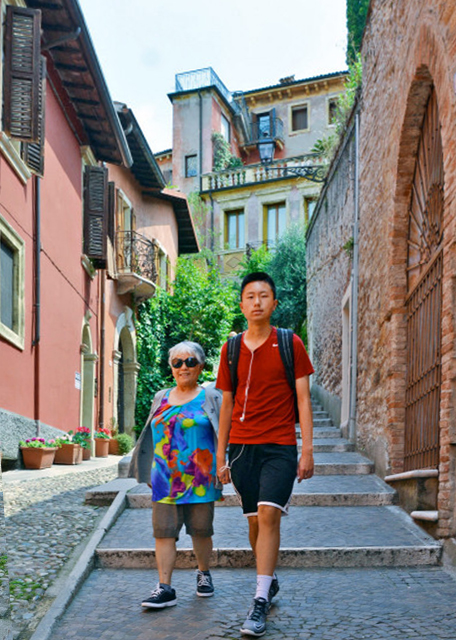
Staircase of Castel S. Pietro (圣彼得“磐石”堡·阶梯 07-10-2018) 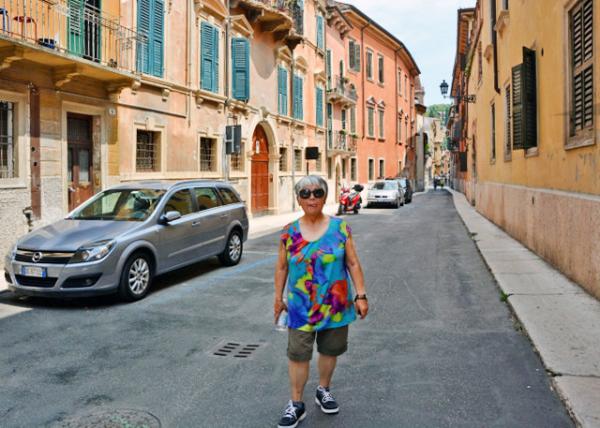 Via Augusto Verità Via Augusto Verità
(奥古斯托·维里塔“庄严·真理”路 07-10-2018) 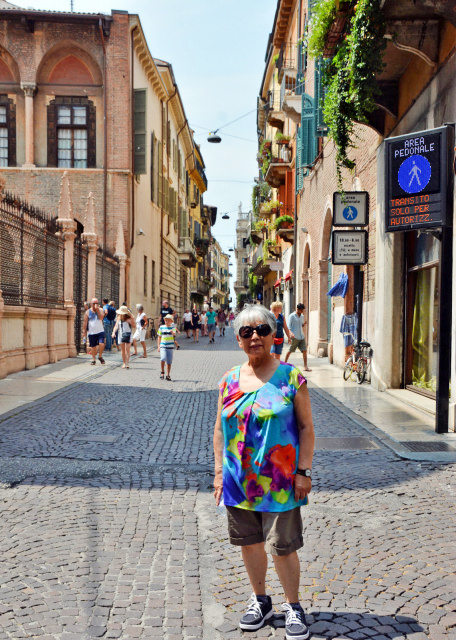
Via Arche Scaligere (斯卡利杰“楼梯”墓路 07-10-2018) 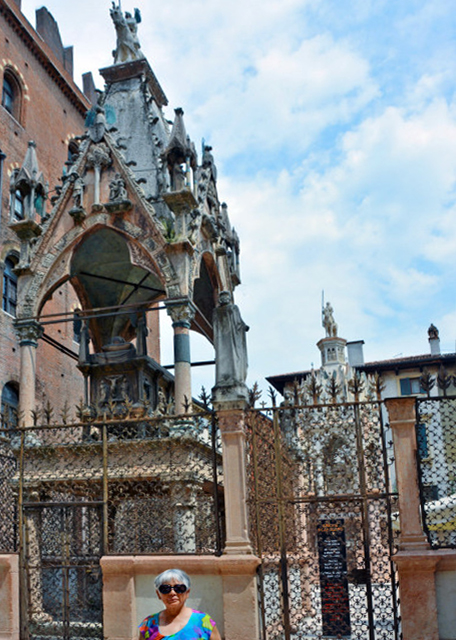
Tomb of Mastino II from 1345 (建于1345年的马斯蒂诺“獒犬”二世墓 07-10-2018) 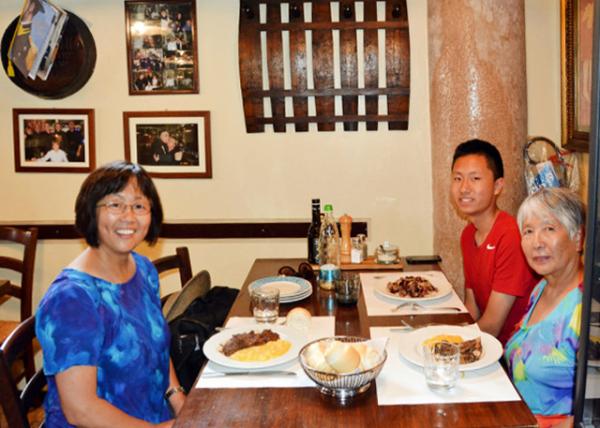 Osteria al Duca (公爵餐厅 07-10-2018) Osteria al Duca (公爵餐厅 07-10-2018)
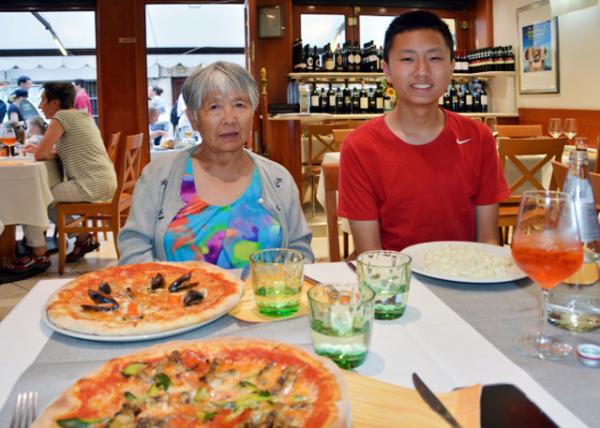 Ristorante da Giorgio (乔治“农夫”餐厅 07-10-2018) Ristorante da Giorgio (乔治“农夫”餐厅 07-10-2018)
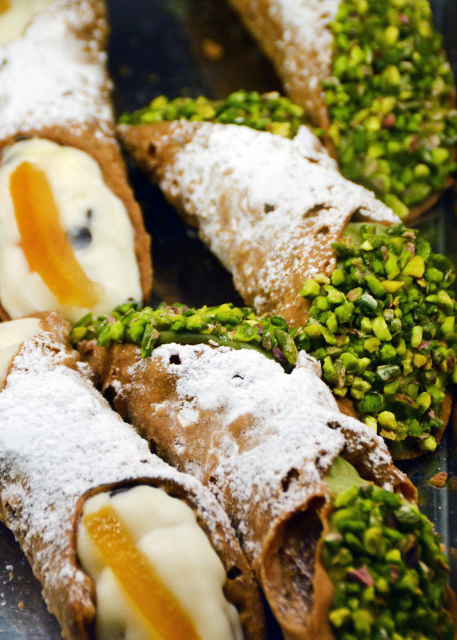
Cannoli (香炸奶酪卷) Crosslinks(相关博文):
Italy(出游意大利)
Europe(欧洲掠影) 9th Grade(高中一年级) |
